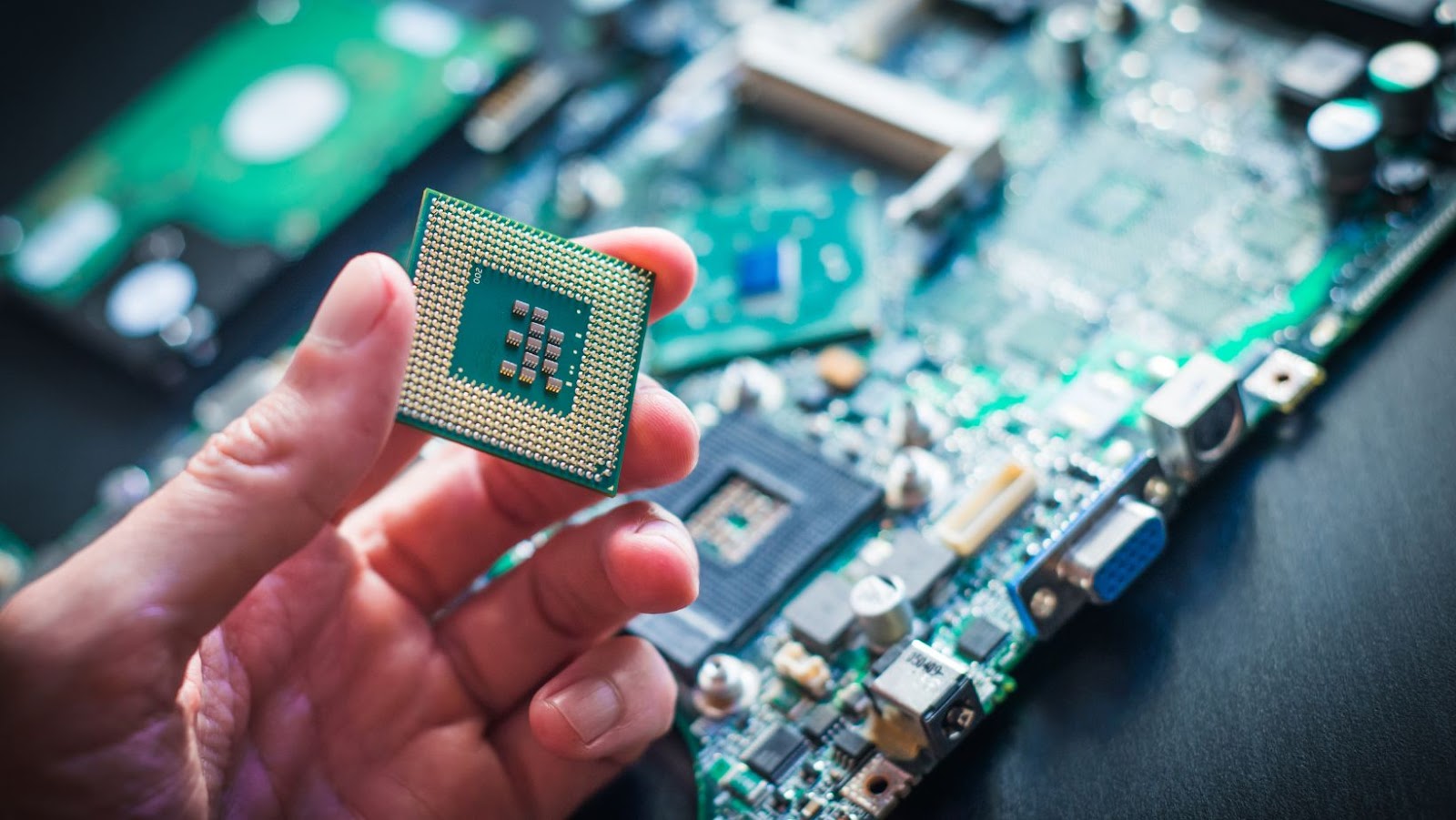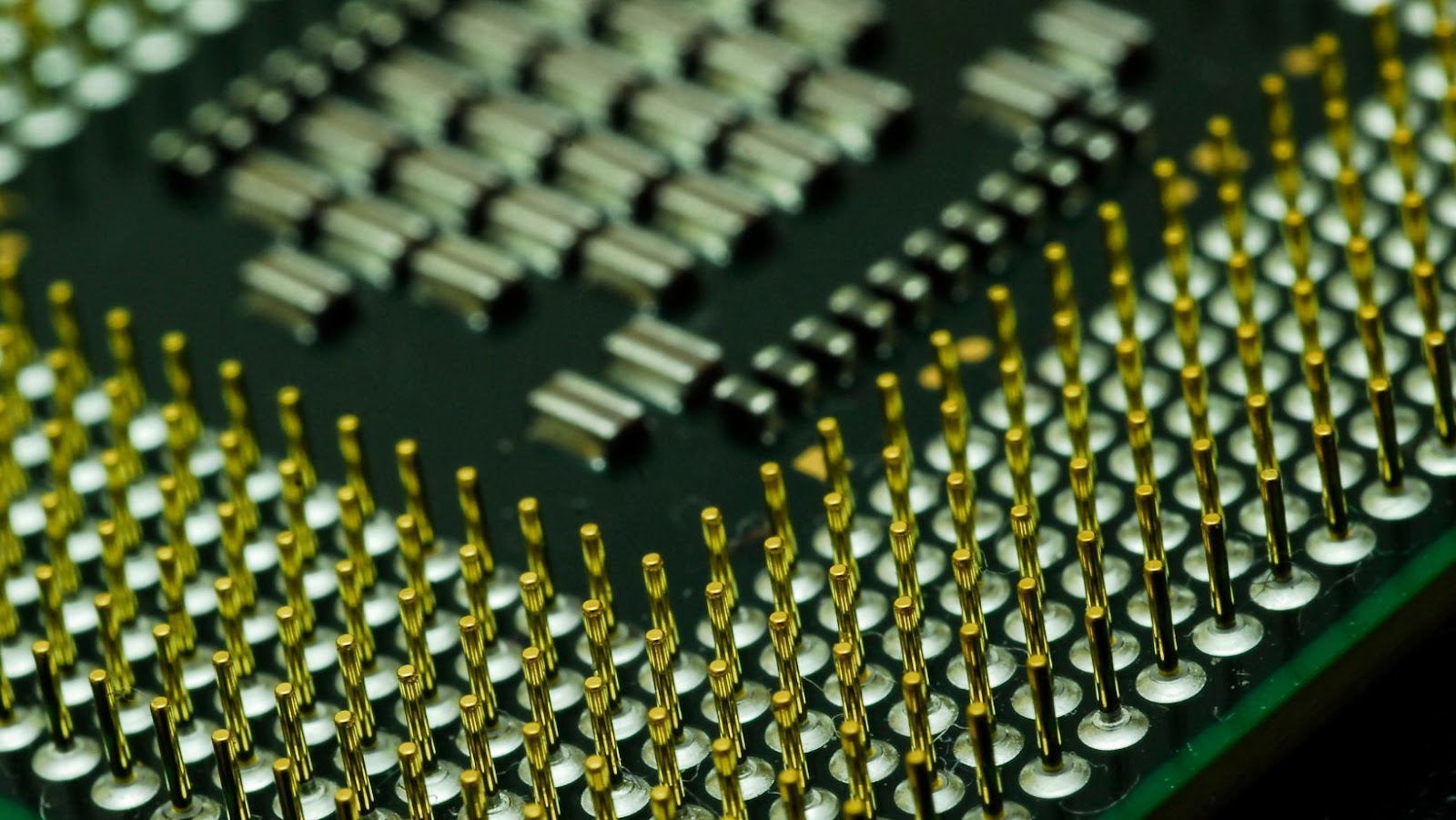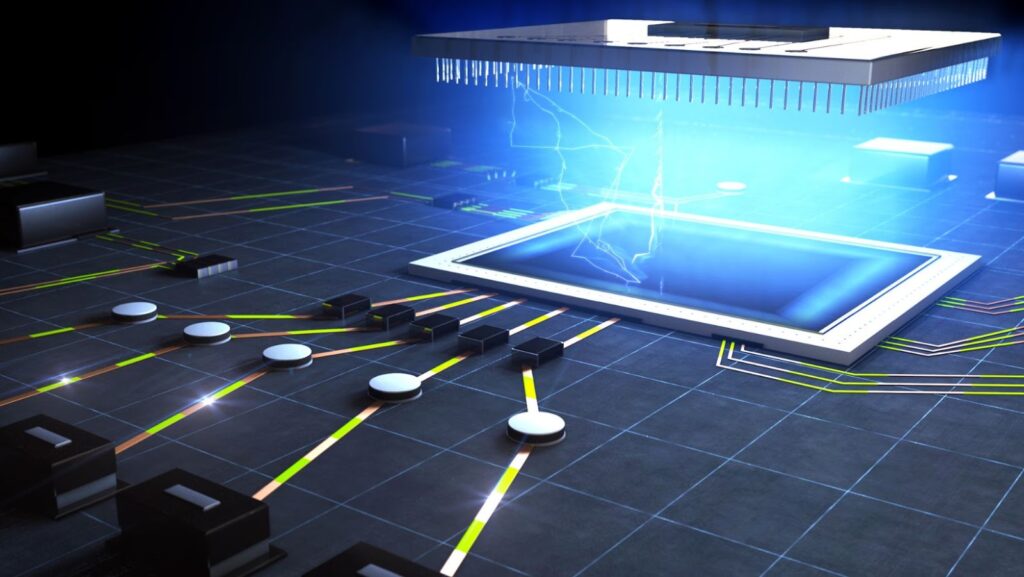Intel recently unveiled the ‘world’s fastest’ desktop processor, with groundbreaking speeds for gaming, streaming and productivity tasks. According to Intel, the new processor can reach up to 5GHz in single core speeds, providing a staggering performance for the computer.
This article will evaluate the features and benefits of Intel’s new processor, and provide a comparison to the current market offerings.
Overview of Intel’s new processor
Intel’s new Core i9-9900 KS processor is the world’s fastest desktop processor. This processor is based on Intel’s 8th Generation “Coffee Lake Refresh” technology and has 8 cores and 16 threads, with a base frequency of 4.0GHz, and a maximum boost frequency of 5GHz. In addition, the processor has an impressive thermal design power rating of just 127W, and boasts 16MB of cache memory. Additionally, the Core i9-9900 KS supports up to 128GB of DDR4-2666 RAM and up to 44 PCIe lanes for high end graphics cards or other compatible devices.
For those unfamiliar with computer processors, cores refer to the number of individual microprocessors within a CPU package. In contrast, threads refer to the amount of processes that can be performed concurrently by those cores. More cores often equate to faster overall processing power due to their ability to run multiple applications simultaneously. At the same time, higher frequencies mean that the CPU can more rapidly process instructions more quickly.
The Core i9-9900 KS also features Intel Thermal Velocity Boost Technology which provides consumers with an extra 200MHz speed boost if environmental conditions allow it—increasing speeds up to 5GHz as opposed to 4.8GHz as available with non-K SKU versions—giving gamers and performance enthusiasts an extra level of speed when needed most without sacrificing energy efficiency or thermal output when compared to other chips in its class.
Performance
Intel just unveiled the ‘world’s fastest’ desktop processor. With a 10-core design, the processor offers a clock speed of up to 5.3 GHz, making it one of the most powerful processors on the market.
Let’s dive into its impressive performance and see how this new processor stacks up.
Speed and power
Speed and power are two of the most important factors to consider when assessing a computer’s performance. CPU, or Central Processing Unit, is an integral part of any computer system as it runs instructions given by the computer. The speed at which the CPU runs and processes instructions is measured in GHz (gigahertz) and can range significantly depending on the model, year manufactured, and processor type.
Multi-core processors offer superior performance compared to single-core CPUs as they can do more tasks concurrently. This makes them more suitable for gaming, gambling, video editing, photo editing or any other task that requires more processing power than a standard task. Furthermore, having multiple cores can help reduce bottlenecks as multiple tasks can be divided among each core allowing for faster task execution time.
RAM (Random Access Memory) also plays an important role in computing power and performance. The amount of RAM available directly impacts how quickly a computer can handle data requests such as running programs and applications. Having enough RAM is essential to ensure that your system runs smoothly without slowdowns or lags; therefore, you must have at least 8GB or more of RAM installed in your PC or laptop.
Finally, storage capacity must not be overlooked when considering speed and power since storage space holds all the files which need to be processed by the CPU and accessed by memory modules to run programs or applications properly. A fast Solid State Drive (SSD) will provide better performance than a traditional Hard Disk Drive (HDD), due to its lack of moving parts; however larger capacities are often necessary so opting for both an SSD drive for faster boot times and access speeds along with an HDD for large capacity storage should provide best overall results easily achievable for most users today.
Comparison to other processors
When comparing processors, several factors need to be considered. Performance is a major one and can be determined by measuring how quickly each processor can complete tasks. This is usually done with synthetic benchmarks and/or specific application tests to compare the speeds.

Additionally, it may be useful to compare the power consumption of each processor, as well as the level of integration and any additional features that factor into performance. Ultimately, choosing a processor boils down to the type of performance you require for your system and the available budget.
Intel just unveiled the ‘world’s fastest’ desktop processor
Intel recently unveiled the world’s fastest desktop processor, boasting a 3.5 GHz frequency across 8 cores for a better mid-range gaming experience. This processor is designed with enthusiasts in mind and is packed with advanced features and capabilities.
Let’s take a closer look at the features of this processor and what it can do.
Core count
The number of physical cores in the processor is one of the most important features when deciding on a new desktop processor. Core count is directly linked to performance, as more cores will enable better and faster multitasking, gaming and overall system speed.
As of 2020, the world’s fastest desktop processor is AMD’s Threadripper 3990X. This incredible incarnation of Zen 2 architecture has an impressive 64 cores and 128 threads – offering unprecedented levels of performance previously unheard of. In addition, it has been clocked up to 4.3 GHz max boost frequency. It offers unbeatable reliability thanks to its many innovative features such as Precision Boost 2, SenseMI technology, XFR 2 plus and SMT (Simultaneous Multithreading).
Coupled with 7nm process technology and a 280W TDP (Thermal Design Power) rating – this flagship Ryzen Threadripper processor provides unmatched levels of real-world performance at an alluring price point.
Cache size
Cache size is the amount of data a processor can store in memory. It is measured in bytes and is typically referred to as L1, L2 or L3 cache. The larger the cache size, the faster the processor can access already stored data in its memory. For example, a typical laptop model will usually have a L1 cache of 32KB, a L2 cache of 256 KB and a L3 cache of 2MB. While these numbers can vary between models, they indicate modern processor speeds and capabilities.
In addition, Level 1 caches are not shared between cores; each core must maintain its separate Level 1 cache if needed by the application or operating system. However, level 2 and 3 caches are often shared amongst cores; any content stored within them is available for access by all cores within the CPU die or package. Therefore increased levels of LLC/L3 caching are beneficial to applications whereby multiple threads within it need access to a common set of data / instructions which previously had to be loaded into each core’s on-die memory (Level 1) creating contention between them.
Overclocking capabilities
Overclocking is running a computer’s processor beyond its stock clock speed. This method can help increase the performance of your PC, allowing it to run faster and more efficiently. It also gives the user better control over how your system performs.

When considering a processor’s OVERCLOCKING CAPABILITIES, you should look for three main features: base frequency, bus speed ratio and maximum multiplier setting.
Base Frequency: This is the processor’s baseline clock rate when it comes out of the box. Higher-end processors typically have higher base frequencies, allowing them to run faster than lower-end processors.
Bus Speed Ratio: The front-side bus speed ratio (FSB) measures how fast data is transferred across different components in your system. The higher this number is, the faster data can travel between components, resulting in a faster overall performance.
Maximum Multiplier Setting: This term describes how far above its base frequency a processor can go — essentially how much “overclock” potential it has right out of the box. A higher multiplier allows you to push your processor beyond its stock speeds and closer to its peak performance levels.
Price
Intel recently unveiled the world’s fastest desktop processor, the ‘Core i9-9900 KF’. This processor is available for purchase for $488 and is packed with features that make it one of the best processors on the market. It promises to deliver high performance gaming and powerful productivity, but what about its price?
Let’s take a closer look.
Cost comparison
The cost of beans can be difficult to determine when it comes to coffee as there are so many variables, such as origin, grade, and roast type. But with some basic knowledge and comparison shopping you can find coffee that suits your budget without sacrificing quality.
Price is generally impacted by local availability and demand for specialty coffee varieties. While most people think of coffee as a commodity crop, higher-end specialty coffees from certain regions or with certain flavour notes can command a premium price based on consumer appetite. In addition, there may be additional geographic cost premiums due to transportation costs and availability by region.
It’s important to remember that the price of coffee beans is only one factor in your overall cup of joe cost; all kinds of other costs go into making coffee—from equipment maintenance to disposal—which will ultimately affect your total price per cup. Below is a breakdown of what a 12 oz bag (340 grams) for an example green or unroasted coffee might cost according to roast level.
Light Roasts: From $7 – $14
Medium Roasts: From $8 – $15
Medium-Dark Roasts: From $9 – $16
Dark Roasts: From $11 – $19
Availability
The world’s fastest desktop processor is currently Intel’s Core X-Series, which ranges in price from $589 to a staggering USD 2,000 depending on the variant and specifications. A few variants of the processor can be found in pre-assembled computers, however the majority of them will need to be purchased separately and then installed into the computer.
One must factor in the price-to-performance ratio when selecting a device to buy or build for the best performance. This price range can also vary based on retailer supply, taxes, shipping costs and other fees that may arise from buying from a different country or online stores.

Further information on Intel’s Core X series can be found through various resources such as Digital Trends, PCMag, Tom’s Hardware and many more websites dedicated to analyzing computer hardware.


More Stories
Keep Your Tribe Engaged: The Benefits of Using Mods on a Hosted Server in Ark
How to Bring the Dreamcore Aesthetic into Your Home
Reasons Why Instagram is Essential for Building Your Personal Brand